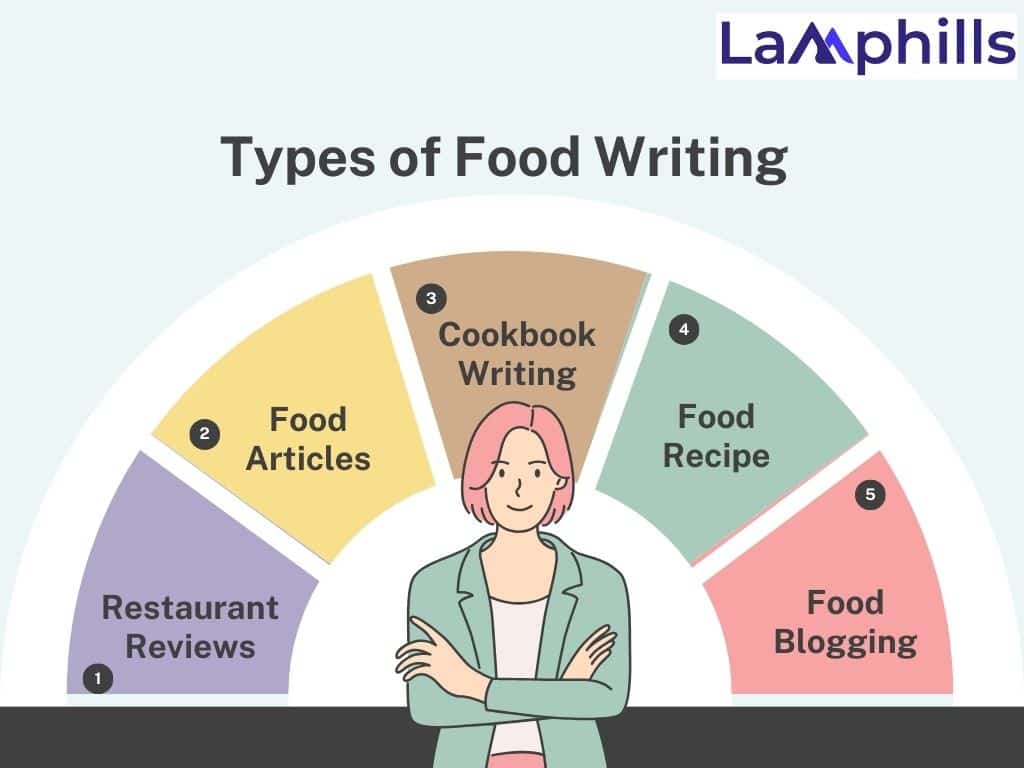The Spice of My Life as a Food Writer. I still remember the first time I sat down to write about food. It was a warm summer evening, and the aroma of freshly baked bread filled my small kitchen. I had just returned from the market, my bag overflowing with vibrant, fresh produce. The colors, smells, and textures were so vivid that I felt compelled to capture them in words. Little did I know that this moment would spark a lifelong passion for food writing.
Over the years, I’ve learned that food writing is not just about describing what’s on the plate. It’s about telling a story, evoking emotions, and creating a sensory experience for the reader. Whether you’re an aspiring food blogger, a seasoned journalist, or someone who loves to share recipes, I will share important tips to make your food writing outstanding..
Let’s get started.
Key Takeaway
- Food writing is a type of writing that tells interesting and vivid stories about food. It’s not boring or plain; instead, it is full of rich descriptions and shows the writer’s love for cooking.
- A food writer creates articles, reviews, and columns about food and restaurants for magazines, newspapers, and websites.
- A food writer covers various topics in the food and restaurant industries, their main duties include, Creating food reviews and recipes, Reporting on food trends, Reviewing restaurants, and Writing books.
- To write about food, you must love it. If you’re a talented writer who loves grammar and enjoys cooking, you might feel ready to start food writing.
What Is Food Writing?
Food writing is a type of writing that tells interesting and vivid stories about food. It’s not boring or plain; instead, it is full of rich descriptions and shows the writer’s love for cooking. There are many different styles of food writing to discover.
Beyond just recipes, food writing can include restaurant reviews, travel stories centered around cuisine, personal essays about memorable meals, and even cultural studies about food traditions. This type of writing connects readers to the sensory experiences and emotional connections that food brings, making it a delightful and engaging read.
It can describe the taste, smell, and texture of dishes, making readers feel like they’re tasting the food themselves. Food writing also highlights the cultural importance and personal stories behind recipes, adding richness to the culinary experience.
Read Also: Why Remote Working Will Die? Expert Opinion
Types of Food Writing

Food writing comes in various forms, each with its unique focus and style. Here are some common types:
1. Restaurant Reviews:
These are opinions on dining experiences, discussing food quality, service, atmosphere, and overall impression. Restaurant reviews are helpful for diners to understand the quality of a restaurant by sharing experiences about the atmosphere, service, and food.
2. Food Articles:
An article of food refers to anything people eat, like fresh meat, fruits, vegetables, fish, shellfish, game, poultry, eggs, butter, and cheese, but does not include malt beverages. Write detailed articles on various culinary topics or trends for food magazines.
3. Food Memoirs
A food memoir is a book where the author shares their personal stories and memories about food, including meals, recipes, and the cultural importance of food in their life. Share personal stories and historical essays about specific dishes or cuisines for magazines or newspapers, emphasizing emotional and cultural connections.
4. Food Recipe Writing
Food recipe writing is the process of giving clear instructions and ingredients to help readers prepare and cook a dish successfully. Explain how to make specific recipes from start to finish for blogs, websites, or publications. It’s step-by-step instructions for making dishes, often with tips, variations, and personal stories.
5. Cookbook Writing:
Cookbook writing is the process of creating a book that contains recipes, cooking tips, and instructions for preparing various dishes. It often includes detailed steps, ingredient lists, photos of the finished dishes, and sometimes personal stories or background information about the recipes. You can use it to share your favorite recipes and cooking tips with others, helping them create delicious meals.
6. Food Industry Trends:
Food trends are popular changes in what people like to eat, often shared online, in magazines, or on TV, and they last a long time. Articles about current trends in the food industry, such as new techniques, popular ingredients, or changing consumer preferences.
7. Food History and Culture:
Food history and culture study how food has changed over time and its links to traditions, customs, and social practices in different communities worldwide, including past diets, food preparation, and the importance of food in rituals and daily life, influenced by geography, economics, and historical events. It contains pieces on the historical and cultural importance of foods, dishes, and cooking practices.
8. Nutrition and Health:
This is about making content that teaches people how to eat healthily and live well, including articles and guides on balanced diets, the benefits of foods, and tips for staying healthy. Articles about the nutritional value of food, offering advice on healthy eating, diets, and the effects of food on health.
9. Food Travel:
This is a type of writing that shares stories about eating local dishes and exploring food culture in different places, by traveling to various locations, tasting the food, and describing these experiences in guides and reviews. Writings about culinary experiences from different regions, featuring local cuisines, food markets, and cultural practices.
10. Food Criticism:
This is the art of evaluating and sharing opinions about food and dining experiences. It involves tasting food, analyzing its flavors, presentation, and quality, and then writing detailed reviews or articles that help readers understand what to expect from a restaurant, dish, or culinary trend. Food critics often provide insights into the overall dining experience, including the ambiance, service, and value for money. Detailed analysis and critique of food-related topics, like books, films, and TV shows about food.
11. Food Blogging:
Food blogging is the activity of writing and sharing content about food on a blog. This can include recipes, cooking tips, restaurant reviews, food photography, and personal stories related to food and eating. Food bloggers often share their posts on social media to reach a wider audience. It is often personal online content about various food topics, including recipes, restaurant reviews, and food photography.
This kind of food writing appeals to various tastes and offers lots of info and fun about food.
Who is a Food Writer?
A food writer creates articles, reviews, and columns about food and restaurants for magazines, newspapers, and websites. Their topics range from cookbooks and restaurant reviews to recipes and food industry trends. Food writers can work as staff writers or freelancers for general magazines, newspapers, digital media, or food magazines. Some are independent bloggers or podcasters, making content for their platforms. Their work involves exploring various aspects of food culture and sharing their insights and experiences with readers.
A food writer’s job often involves visiting restaurants, attending food events, interviewing chefs, and staying updated on the latest food trends. They must have a keen sense of taste, strong writing skills, and the ability to communicate their culinary experiences engagingly. Many food writers also develop a deep understanding of food history, cooking techniques, and the business side of the food industry. This allows them to provide comprehensive and insightful content that resonates with their audience.
Responsibilities of a Food Writer
A food writer covers various topics in the food and restaurant industries. Here are some key duties:
1. Create food reviews and recipes: Food writers tell readers about tasty food—where to find it and how to make it. This includes testing recipes, trying new food products, and showcasing the best food from different places and cultures.
2. Report on food trends: Keeping up with the latest food trends is essential. Food writers review new kitchen tools and explore new cooking methods or sustainable food practices.
3. Review restaurants: Many food writers are restaurant critics. They interview restaurant owners and review the food, ambiance, service, and prices at new restaurants.
4. Write books: Food writers often publish books about food. Famous writers like Julia Child, Anthony Bourdain, and Michael Pollan have written best-selling cookbooks or books on the food industry.
The 7 Most Important Lessons You Need As A Food Writer
Here are the seven most important lessons I’ve learned on my journey.
#1. Embrace Your Voice
When I first started, I tried to emulate the styles of famous food writers, thinking it would make my work more appealing. However, I quickly realized that my unique voice sets me apart. Authenticity resonates with readers. Share your personal experiences, anecdotes, and quirks. Let your personality shine through your words. For instance, I often incorporate my grandmother’s cooking wisdom into my stories, adding a touch of nostalgia and personal connection.
#2. Show, Don’t Tell
Descriptive writing is the heart of food writing. Instead of saying “The soup was delicious,” describe each spoonful’s velvety texture, the burst of flavors, and the comforting warmth. Use vivid, sensory language to paint a picture. One of my favorite tricks is to close my eyes and imagine I’m describing the dish to someone who’s never seen it before. This practice helps me focus on the sensory details that make the experience come alive.
#3. Know Your Audience
Understanding your audience is crucial. Are they home cooks looking for practical recipes, foodies seeking the latest trends, or travelers exploring global cuisines? Tailor your content to their interests and level of expertise. When I write for a gourmet magazine, I dive deep into culinary techniques and ingredient origins. For my blog, I keep things more approachable, sharing tips and tricks for everyday cooking.
#4. Research is Key
Great food writing requires thorough research. Whether you’re writing about a specific cuisine, ingredient, or culinary technique, ensure you have your facts straight. I once wrote an article about the history of saffron, spending hours reading about its origins, cultivation, and uses in different cultures. This depth of knowledge not only enriched my writing but also established my credibility with readers.
#5. Photography Enhances Your Story
A picture is worth a thousand words, especially in food writing. High-quality, mouth-watering photos can draw readers in and complement your narrative. I invested in a good camera and took a food photography course to improve my skills. Now, I spend almost as much time styling and shooting dishes as I do writing about them. Visuals can capture details that words sometimes can’t, creating a more immersive experience for your audience.
#6. Edit Ruthlessly
Editing is where the magic happens. It’s tempting to fall in love with your first draft, but good writing requires refinement. I learned to be my own harshest critic, cutting out unnecessary adjectives, tightening sentences, and ensuring clarity. Sometimes, I’ll leave a piece for a day or two and return with fresh eyes. This break often helps me spot errors and areas for improvement that I missed before.
#7. Engage with the Community
Food writing is not a solitary endeavor. Engage with your readers and fellow writers. Respond to comments, join food writing groups, and attend culinary events. The feedback and support from the community can be invaluable. I’ve made lasting friendships and found mentors through these interactions. Plus, staying connected keeps me inspired and motivated.
How to Become a Food Writer: Step-by-Step Guide
Becoming a food writer didn’t happen overnight. It came from my love for food, passion for writing, and many hours of experimenting in the kitchen. While there’s no single path to food writing, here are some steps to start your journey in this exciting career:
Step 1: Love Food
To write about food, you must love it. My love for food began in my grandmother’s kitchen, watching her turn simple ingredients into delicious dishes. These early experiences gave me a deep appreciation for food and its power to bring people together.
Start exploring different cuisines, trying recipes, and attending food festivals. Immerse yourself in the food world and let your taste guide you. The more you know and love food, the more passionate and authentic your writing will be.
Step 2: Start Learning About Culinary Arts
If you’re a talented writer who loves grammar and enjoys cooking, you might feel ready to start food writing. However, improving your writing skills through education can be beneficial. Some food writers get a Journalism or Communications degree to enhance their writing. Although a specific degree isn’t necessary to become a food writer, it can improve your work.
Food writing isn’t as technical as medical writing, but knowing cooking skills, techniques, and terms is important to be seen as an expert. Many food writers attend culinary school to learn these basics. For instance, I started by keeping a food journal, where I wrote about my cooking experiments, restaurant visits, and food thoughts. This helped me improve my writing and develop a unique voice.
Take writing courses, attend workshops, or join writing groups to enhance your skills. Reading is also important. I read books by famous food writers like M.F.K. Fisher and Ruth Reichl, learning from their styles and techniques. Their work inspired me to find my voice.
Having this background can help you stand out when pitching article ideas to publications or food companies.
Step 3: Start a Food Blog
If a brand wants you to write monthly blog posts, they’ll check your writing style and look for a blog section on your site. New food writers who don’t have many samples can benefit from starting a blog. Make your blog a main page on your website and post regularly. Also, create content categories that match your food writing focus.
Starting a food blog is a great way to showcase your writing and build an audience. My blog began as a simple online diary for recipes and restaurant reviews. Over time, it became a platform to connect with other food lovers and establish myself in the food writing community.
Choose a niche that reflects your passion, like baking, ethnic cuisine, or sustainable eating. Consistency is key; regular updates will keep your audience engaged. Experiment with different formats, like photo essays, video tutorials, or podcasts.
Step 4: Build an Online Portfolio
If you are an experienced food writer, you probably have many good writing samples. Unless you agree not to share them, you should publish these samples on your website. Create a portfolio section to upload your work. If possible, link to the original publications and include a brief description of each project.
Step 5: Pitch Your Work to Publications
Pitching to potential clients or publications can seem challenging for many food writers. However, if you have a website and a few high-quality samples, you can start reaching out immediately. It’s normal to feel unsure at first, but it becomes easier with practice.
Each publication may have its submission guidelines. For example, submitting a cooking tip to Kitchen requires an outline, blog title, images, and more. Getting published in magazines, newspapers, or online platforms can boost your credibility. I remember the excitement of seeing my first article in print, a review of a local farmer’s market in a regional magazine. This taught me the importance of crafting good pitches and targeting the right publications.
Research publications that match your writing style and interests. Tailor your pitches to each one, explaining why your story fits their readers. Don’t get discouraged by rejections; persistence is key. To stay organized, create a spreadsheet to track your prospects, their contact information, and specific pitching guidelines. Starting this system early can help you stay on top of your outreach efforts.
Step 6: Network with Other Food Writers
As a food writer, improving your networking skills can greatly boost your business. Besides cold outreach, networking with other food lovers is a great way to find future projects. Join food-related meetup groups or local culinary organizations to meet similar professionals.
Connecting with other food writers can lead to new opportunities. I attended food writing conferences and culinary events, meeting people who shared my passion. These connections offered valuable insights, feedback, and support.
Join food writing communities on social media, participate in forums, and engage with other writers’ content. Networking helps you learn from others and increases your visibility in the industry.
Step 7: Keep Learning and Evolving
The food industry is always changing, so staying updated is essential. I attend culinary workshops, read industry journals, and follow food trends to keep my writing fresh and relevant.
Try new writing styles and explore different culinary topics. Embrace constructive criticism to improve your craft. Every kitchen experience and shared meal is a chance to grow as a food writer.
Let’s look at different food writing niches to help you find one that fits your passion.
Types of Food Writing Niches
When starting in food writing, it’s okay to keep your topics broad, especially if you lack writing samples. However, defining your niche can attract specific projects and opportunities.
Agriculture: Discuss how farming trends affect food quality.
Sustainable Practices: Write about sourcing fresh, local ingredients through eco-friendly farming.
Wine & Drinks: Explore popular wine varieties worldwide.
Culinary Travels: Share stories about unique food destinations and must-try dishes.
Culinary Techniques: Discuss new cooking trends and methods.
Kitchen Gadgets: Review top gadgets for the kitchen.
Food Startups: Research innovative culinary companies.
Recipe Creation: Develop and test original recipes.
Health & Nutrition: Highlight healthy food choices that influence lifestyles.
Conclusion
Becoming a food writer is a journey of delicious discoveries and creative expression. My path has been shaped by a love for food, dedication to writing, and the joy of sharing culinary experiences. If you have a passion for food and a story to tell, follow these lessons and steps and start your journey as a food writer. It’s a journey worth taking.
Remember, every dish has a story, and it’s up to you to tell it. So, grab your pen or keyboard, and start writing your culinary adventures. The world is hungry for your stories.
FAQs.
What does a food writer do?
A food writer or restaurant critic is a professional who writes and reviews different foods.
What are the 4 types of food writing?
There are four main types of food writing: restaurant reviews, recipes, blogs and social media posts, and food memoirs.
How to make money as a food writer?
Food blogging can be more than a hobby; it can be a profitable career if you know how to make money from it. Here are 15 effective ways to earn income as a food writer:
1. Sponsored posts
2. Affiliate marketing
3. Selling products
4. Hosting cooking classes
5. Writing cookbooks
6. Selling meal plans
7. Food photography services
8. Creating a YouTube channel
9. Podcasting
10. Premium content
11. Advertising
12. Food consulting
13. Food tours
14. Recipe development
15. Public speaking and events
What is a food writer called?
A food critic, also known as a food writer or restaurant critic, is a professional who tastes and reviews food. They usually visit different restaurants, try various dishes, and write about their experiences.
What are the skills needed as a food writer?
You’ll need:
- Good understanding of English.
- Strong writing skills.
- Persistence and determination.
- Good speaking skills.
- Ability to take initiative.
- Creativity in finding new methods.
- Ambition and desire to succeed.
- Knowledge of media production and communication.
Related Articles:
Food Journalist: Our 2024 Researched Picks (Updated)
The Best 15 Crisis Management Companies You Need Right Now 2024
Sports Journalists Nigeria: Our 2024 Top Picks & All You Need
The Best 2024 PR Package Ideas & Everything You Need.





